Magnesium sulfate, another name for Epsom salt is a common compound, which is often praised by gardening communities because of its benefits to plants. In most cases, it can be used to cure magnesium and sulfur deficiencies which are important for the growth of healthy plants. Nevertheless, while some plant species benefit from Epsom salt, others do not. This article will focus on how effective or ineffective Epsom salts are for different types of plants by looking at their advantages and disadvantages. We will also review various scientific studies and expert opinions, thus providing gardeners with all the knowledge they need to decide whether to use Epsom salts in gardening practices.
Benefits of Epsom Salt for Different Plant Types
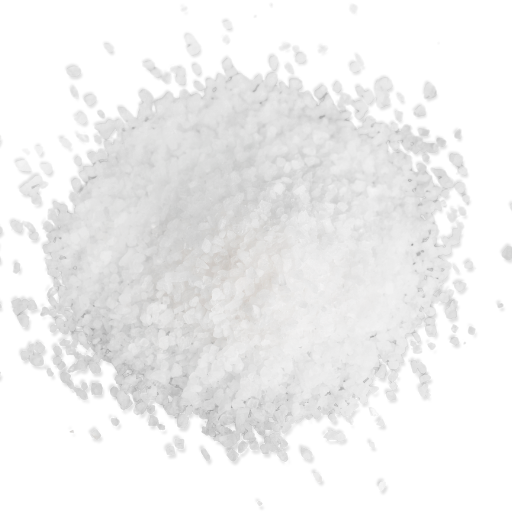
Multiple advantages have been linked to Epsom salt use in specific plants, mostly those that need high magnesium and sulfur levels. For example tomatoes and peppers which are known for intense feeding; through correcting some common magnesium deficiencies, the use of Epsom salt can improve fruit production and general plant health. Similarly, roses can benefit from using Epsom salt because it encourages stronger blooms as well as greener leaves. However, applying too much may damage the plant rather than help it, so careful application is needed and a soil test should be done before hand to make sure that this is necessary.
Nutrient Uptake among Different Plants
The key components of Epsom salts are Magnesium and Sulphur which play important roles in the uptake of nutrients by plants thus directly improving crucial physiological processes. Photo synthesis blood depends on magnesium since it forms an integral part of chlorophyll molecule hence helping plants to utilize solar energy effectively. It also helps in enzyme activation as well as nucleic acid synthesis. Sulfur on the other hand plays pivotal role in amino acids, proteins formation even vitamins construction being essential root development seed formation among many others. Therefore, supplying adequate amounts of such elements could increase the efficiency of nutrient uptake by various plants, thereby increasing their overall fitness and productivity. Nevertheless, the method should be cautiously applied, relying on certain requirements peculiar to a particular species under specific ground conditions.
How Epsom Salt Supports Plant Growth and Development
Magnesium sulfate heptahydrate MgSO₄·7H₂O commonly referred to as Epsom salt promotes plant growth through several mechanisms (Chalker-Scott 2012). According to Schippers et al.(2020), Chlorophyll makes efficient sunlight usage possible due to huge amount of magnesium contained in it hence forming an optimal concentration that usually stays between 0.2%-0.4% in most plant tissues (Chalker-Scott 2012). Sulfur on the other hand helps to manufacture amino acids and proteins in plants (Panasenko et al. 2019). Appropriate soil sulfur levels, ranging from 10 to 30 mg/kg, can significantly improve plant vigour and stress resistance (Chalker-Scott 2012). Sold as follows: “Dissolve one tablespoon (about 14.3 grams) of Epsom salt in a gallon of water for foliar spraying or soil drench.” This will ensure that there is enough nutrient balance without an accumulation excess. By following these guidelines, Epsom salt can effectively promote robust growth and high yields in a variety of plant species.
Boosting Plant Health with Magnesium and Sulfate
To boost plant health by adding magnesium and sulfate, specific technical parameters must be understood and followed strictly for better results. The supply level for magnesium which is vital in chlorophyll production should range between 0.2% to 0.4% in leaf tissues for proper photosynthesis efficiency (Panse et al., 2021). Sulfur is important since it helps synthesize amino acids and proteins, among others; this should be maintained at about 10-30 mg/kg, resulting in more vigorous plants that may also resist stress; Chalker-Scott, L. (2012). Just dissolve one tablespoonful of Epsom salt, equivalent to approximately 14gms a gallon of water, then apply as spray onto foliage or pour within the ground immediately around the roots. Such dosage allows balanced availability of nutrients instead of allowing too much build-up that may lead to intentional or unintentional imbalance. To adjust such parameter soil testing would be crucial while adjusting both magnesium and sulphate keeping them within optimal ranges necessary for maximum yield per unit area under planting conditions.
Epsom Salt Application for Common Garden Plants
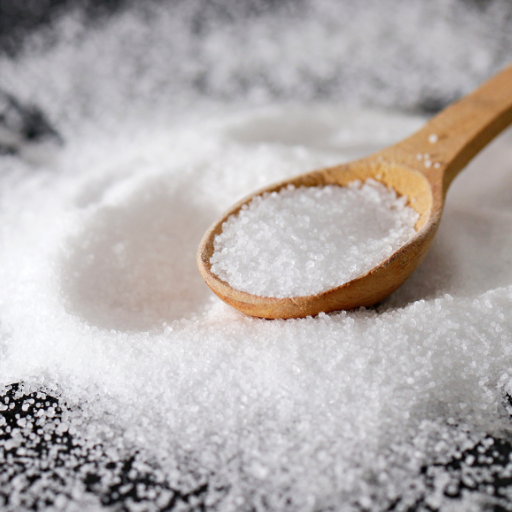
There is a need to make the approach that will work best for each of these plants depending on the specific plant species. For tomatoes, apply 1 tablespoon of Epsom salt in a gallon of water as a foliar spray every two weeks to prevent blossom-end rot and encourage healthy growth. Roses benefit from applying half cup of Epsom salts sprinkled around their bases. Peppers like tomatoes also improve with bi-weekly foliar applications using the same concentration to increase fruit yield. In lawns, Epsom salts can be applied at two pounds per 1250 square feet to encourage lush green grass. Before application, it is important always conduct soil test to ensure nutrient levels are within the desired limits for fear potential toxicities or any imbalances in plant nutrition.
How Epsom Salt Benefits Vegetable and Fruit Plants
Vegetable and fruit plants benefit greatly from Epsom salts whose main constituent is magnesium sulfate. Magnesium is one essential component found in chlorophyll, the substance used by plants for photosynthesis. When there is enhanced production of chlorophyll, this helps in more efficient energy capture from sunlight thereby promoting strong growth as well as higher yields through increased photosynthesis processes—furthermore, magnesium aids in absorption of other vital nutrients such as nitrogen and phosphorus. In addition, for fruits bearing plants magnesium sulphate enhances ripening hence improving both size and quality.
The technical parameters provided for when applying Epsom salt are precise. For vegetables like cucumbers or beans, they can have a foliar spray with one tablespoon dissolved into every gallon sprayed every two weeks, whereby all fruit trees would need about one-half of a cup sprinkled around the base and watered thoroughly during spring and fall seasons for proper development (Alissa). Similar concentrations applied on peppers periodically gives good results just as in case of tomatoes where harvesting should be encouraged through weekly or bi-weekly foliar applications (Alissa). Epsom salt can be applied by broadcasting at a rate of 2 pounds per 1,250 square feet for lawns to grow lush green grass. Thus, soil test must be conducted before using Epsom salt supplement in order to ensure of nutrient status which is critically positioned well.
Enhancing Flowering Plants with Epsom Salt
Epsom salt also known as magnesium sulfate is highly beneficial for flowering plants because it increases petals size and intensity of color as well as the overall health of the plant. The technical application for flowering plants involves both soil and foliar methods. So as an example a common practice that farmers do in improving flower production include mixing one tablespoon of Epsom salt into a gallon of water and then spraying this solution on the leaves of these flowers. For soil application, one tablespoon can be poured around each plant’s base then thoroughly watered to enhance absorption.
Yellowing leaves are frequently associated with magnesium deficiency, impaired flower development has been observed when there is low Mg concentration (L.) By supplying magnesium and sulfur through Epsom salts, these nutrients act as critical ones supporting chlorophyll production and promoting rigid cell walls to allow bulging flowers. Regular soil testing should be done in order to check levels of Magnesium in soil, hence balancing nutrition. This approach ensures optimal health and thus maximizes their potential ability to bloom demonstrating how crucial Epsom salt may be employed in horticultural practices according to scientific researches carried out over time.
How Using Epsom Salts on Houseplants and Lawns Benefits
The magnesium and sulfur in Epsom salts have many benefits when used on lawns or house plants. For lawns, a combination of magnesium and sulfur in Epsom salts can improve grass growth, increase chlorophyll production, making it appear lush and green. The recommended technical method involves dissolving two tablespoons of Epsom salt into one gallon of water that is sprayed evenly over the lawn using sprayer. It should be done once every month during the growing season for constant magnesium supply.
Epsom salt use on houseplants can enhance healthy leaves and colorful blooms. There are two ways to apply this; general watering or mix 1 teaspoon of Epsom salt per gallon of water or you may choose to spray such solution by foliar spray technique after every 4-6 weeks. These indoor plants get an extra amount of magnesium and sulfur that promote nutrient absorption mechanisms, chlorophyll synthesis as well as general plant development vigor. Soil tests are encouraged to ascertain the levels of magnesium (Mg) so that application rate can be adjusted appropriately to avoid possible nutrient imbalances.
Several scientific findings confirm that regular usage of Epsom salts improves the overall health status of plants by addressing Mg deficiencies which are usually displayed in form yellow leaves with retarded growth. By using these technical guidelines given above, applications of Epsom salts applied correctly can very effectively foster both grass covers and potted flowers growth thus offering scientifically based ways to preserve plant health.
Potential Risks and Limitations of Epsom Salt
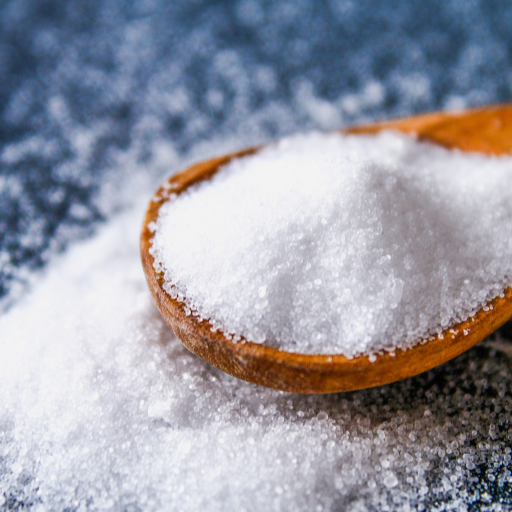
There are several negative effects of overusing Epsom salt in garden applications. Excess magnesium upsets the soil nutrient balance, as it particularly impedes calcium uptake which is essential for plant cell structure and growth leading to weaker plants more prone to diseases and pests. Moreover, too much sulfur can result in soil becoming acidic hence having reduced pH that could make it unsuitable for most crops and lead to leaching of nutrients. If not properly checked, the misuse of Epsom salt without soil test might worsen an already deficient or toxic soil. Therefore, strict adherence to recommended dosages and periodic monitoring of ecological conditions are vital.
Can All Plants Tolerate Epsom Salt?
Not all plants feel comfortable with applications made using Epsom salt. There are certain plants like roses, tomatoes and peppers which gain from extra magnesium and sulfur while others may be affected negatively if these elements are already sufficient in the ground. Most legumes, leafy greens and root vegetables do not require additional magnesium; they get damaged when too much is added. The peculiar needs of each plant species should be assessed by doing proper soil tests before resorting to this kind of application (Epsom Salt Council). Application beyond what is required tends to disrupt nutrient balances making the soil harmful for plant life.
Recognizing Signs of Epsom Salt Overuse
One way a person can identify an overuse condition on a crop due to Epsom salt is recognizing some symptoms that tell that a nutrient imbalance exists in the ground. One common symptom is called leaf scorch where leaf edges turn brownish or dry up completely (the University of New Hampshire Cooperative Extension). This arises from excess magnesium or sulphur concentrations that hinder calcium absorption thereby affecting water status among other things. Also visible can be yellowing between leaf veins that demonstrates magnesia toxicity (the University of New Hampshire Cooperative Extension). Soil testing done showed high levels of magnesium and sulphur, through the following parameters: magnesium levels above 120 ppm and sulfur levels exceeding 250 ppm hence indicating imbalanced nutrient profile. Another technical parameter to monitor is soil pH; values dropping below 6.0 suggest increased acidity caused by surplus sulfur, which can impair nutrient availability and promote toxic conditions. These symptoms can be mitigated by constant checks on Epsom salts application as well as proper soil management.
How to Safely Integrate Epsom Salt into Your Gardening Routine
Before including Epsom salt in your gardening routine, it is important that you first do a soil test to find out how much magnesium and sulfur are already there. Whenever such deficiency exists, it can be corrected safely by applying Epsom slat at a rate of one tablespoon per gallon of water once every month during the growing season (the University of New Hampshire Cooperative Extension). Dissolve 1 table spoon of Epsom salt in one gallon of water for use in foliar applications. This should always be followed with thorough watering to evenly distribute nutrients among plants. Its application has been regulated through these guidelines as well while also requiring regular monitoring of plant health and condition of soil in order to avoid overuse (Epsom Salt Council).
Epsom Salt for Soil Health
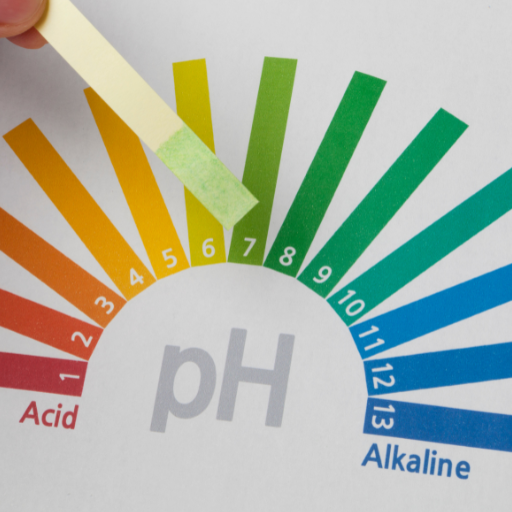
Epsom salt in the form of magnesium sulphate helps to improve soil health by supplementing it with essential elements such as magnesium and sulphur. This element is highly important for photosynthesis occurring in plants because it forms a central atom of chlorophyll molecules, thus giving them a green colour and enhancing the nutrient absorption ability of plants. On the other hand, sulfur is critical in protein synthesis and enzyme function leading to strong growth of plants. Application of Epsom salt can correct magnesium deficiencies that are represented by yellow leaves, which means chlorosis, while also enhancing plant’s overall health and productivity. Additionally, seed germination will be improved when Epsom salt is applied to them, increasing nutrient absorption and strengthening the plant’s cellular structure; hence, proper application may increase agricultural productivity.
How Epsom Salt Can Improve Soil Structure
Epsom salts contribute towards better soil structure by increasing its magnesium content thereby improving cell quality of plants and promoting root development. Magnesium helps bind particles together, creating crumb-like structures that allow for easy air movement within the soil as well as water infiltration through it. A good soil structure allows roots to absorb nutrients more effectively resulting into healthier plants. Also, this makes it easier for roots to penetrate compacted soils reducing water runoff since they do not have access to enough water thus making this type of soil loose and friable; hence strong plant growth and high agriculture performance can be supported.
The Importance Of Epsom Salt In Soil pH Balance
Epsom salt commonly known as magnesium sulfate (MgSO₄) is used extensively in balancing pH levels within soils that are considered acidic or alkaline. It does not directly affect pH but applying magnesium sulfate has an indirect effect on alkalinity or acidity related issues of soils – deposition of Mg2+ ions changes buffer capacity hence availability status for other key nutrients necessary for stress-free soil solutions where crops grow maximally. This process also results into ensuring soils are favourable to crop growth. It is usually 1-2 tablespoons of Epsom salt per gallon of water for foliar applications or as a soil drench. Soil testing can be done to determine pH levels and nutrient deficiencies to fine tune application without overdoing hence the need for such analyses.
Using Epsom Salt To Correct Soil Magnesium Deficiency
Deficient magnesium in the soil leads to plant health problems such as yellowing leaves, stunted growth, etc. Epsom salt which contains magnesium sulphate can be used to address this deficiency. A typical recommendation is applying 1-2 tablespoons of epsom salt per gallon of water either as a foliar spray or direct soil application. The application helps replenish magnesium levels in the soil, increasing chlorophyll production and promoting nutrient absorption. Careful monitoring and soil testing are necessary to ensure optimal magnesium levels by avoiding over-application that may lead to potential nutrient imbalances or toxicities.
Application Methods for Epsom Salt
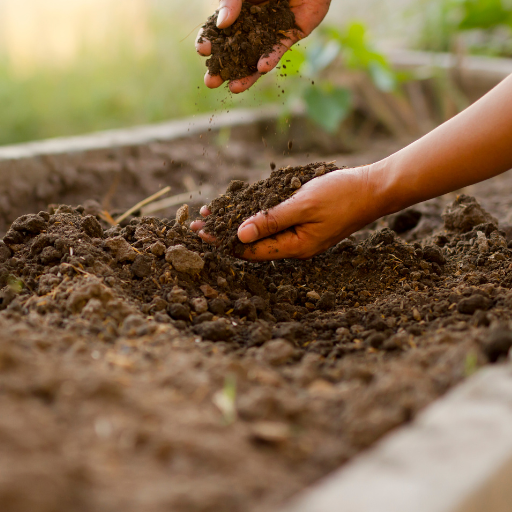
Epsom salt application is also possible through soil drenching. This means dissolving Epsom salt in water at a rate of 1-2 tablespoons per gallon and pouring onto the soil around the plants. Foliar spraying is an alternative that allows magnesium to be taken directly through the leaves. The same dilution ratio applies here, only that it involves direct spraying on top of leafings with solution. For larger agricultural applications, Epsom salts can be broadcasted across the field and then watered in to cause even distribution and absorption. In addition, regular soil testing should be integrated into management practices to monitor magnesium levels and modify rates accordingly thus avoiding any potential nutrient imbalances.
Soil Application Best Practices
For optimum results and plant health when using Epsom salt for soil application, it is important to adhere strictly to recommended best practices already established within this field. This begins by carrying out an extensive soil analysis test so as to determine the existing levels of magnesium deficiency or otherwise from which it becomes easier to determine appropriate dosage hence preventing over-application. The stipulated gallons of water for 1-2 tablespoons of Epsom Salt should be adhered to when applying epsom salt mixes. For soil drenching, distribute or spread this mixture around the base plant roots evenly to facilitate the absorption of Mg ions.
When using broadcasting method in larger agricultural settings ensure uniform coverage by calibrating spreading equipment according to target application rate. After broadcasting, give thorough watering because this will assist dissolve Epsom salt and make it sink into soils.
Keep checking on plant responses as well as periodic monitoring of magnesium concentration in soils. Soil tests should be regularly carried out during application calendar so as to make changes where required and maintain nutritional balance across periods.. Additionally, each application should be documented, including the date, the rate used, and the method employed to track progress while predicting needed adjustments toward the treatment plan.
Foliar Spray Techniques for Different Plants
- Vegetables:
- For vegetables, a foliar spray concentration of one tablespoon of Epsom salt per gallon of water is recommended. This solution should be applied every fortnight during the growing season. Some particularly sensitive vegetables, such as tomatoes and peppers, benefit greatly from this approach due to their high magnesium requirements.
- Fruit Trees:
- Fruit trees, including citrus and apples, need a different approach. Two tablespoons per gallon of water is an ideal concentration. It should be done three to four times during the growing season, with intervals ranging between 4 and 6 weeks. Both upper and lower leaf surfaces must be covered for maximum absorption.
- Ornamentals and Flowering Plants:
- Ornamentals and flowering plants such as roses and azaleas thrive with a concentration of one tablespoon per gallon of water. Foliar sprays are administered monthly throughout spring and summer months. Thus, the production of blooms is enhanced thereby improving overall plant vigor.
How to Prepare and Use Epsom Salt Solutions
To begin, when preparing the Epsom salt solutions, always decide on the concentration which is based on the type of plant. For vegetables, use one table spoon per gallon of water; for fruit trees, use two tablespoons per gallon; for ornamentals and flowering plants, use a tablespoon per gallon. To mix it up, measure out the right amount of Epsom salt and dissolve it fully in the specified amount of water. Stir until the salt completely dissolves so as to get an even distribution of magnesium.
While using Epsom salt solution, do not employ dirty sprayers that are likely to contaminate your crops. Fill your sprayer with this mixture and set its nozzle in a fine mist form to cover every part adequately. When applying for foliar applications, make sure you cover both surfaces of leaves by spraying directly onto them. Apply the foliar spray during cooler parts of the day, such as early mornings or late afternoons, to avoid leaf scorching due to the high temperature, which also accelerates absorption.
For soil application purposes pour directly at root level allowing seepage into root zone. It is especially helpful during dry spells since it provides hydration as well as nutrient supplementation. The application rates and frequencies must be changed through regular monitoring and soil testing so as to maintain balanced nutrition and good plant health. Document each procedure properly indicating date, concentration and method performed hence facilitating tracking for any future adjustments.
Monitoring and Adjusting Epsom Salt Use
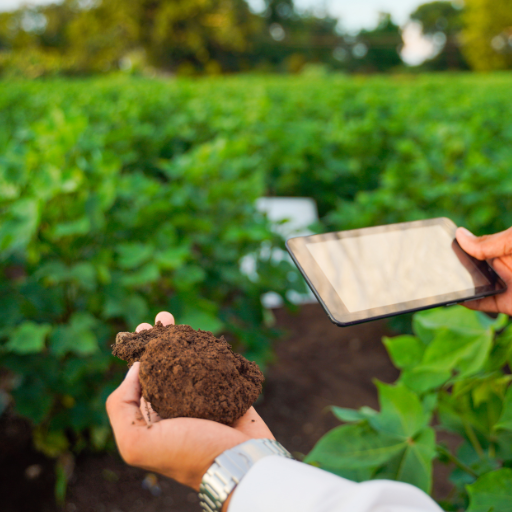
While using Epsom salt, monitoring and assessing plant health regularly is essential to maximize its benefits and prevent possible overuse. Key indicators that should be observed include leaf color and texture, growth rate, general vigor. The plants should exhibit vibrant-green leaves with consistent growth. On the contrary, signs of magnesium toxicity such as leaf burn or stunted growth call for immediate adjustment of application practices. To measure the level of magnesium periodically through soil testing helps guide fine-tuning of Epsom salt concentrations and application frequencies. Also, documenting observations and outcomes facilitates data-based decisions about their future use, ensuring continued plant health and productivity.
How to Test Soil Magnesium Levels Before Applying Epsom Salt
To test the soil magnesium levels before applying Epsom salt do the following: First collect soil samples from several locations within your garden so as to have a representative study area.Then get some clean trowel and collect some soil from about four to six inches deep on different sections of your garden; afterwards mix them together in a clean container.Next air-dries any wet samples of soil.Once dried out, break apart any lumps present while getting rid of dirt.The mixed sample is taken to a laboratory for soil testing where it gets analyzed for various nutrients including magnesium.Some home kits can assist you quickly know but lab results are more accurate since they cover most aspects necessary.In addition, you will receive a comprehensive report from the labs which includes current magnesium levels as well as recommendations on adjustments based on specific requirements.
Monitoring Plant Response to Epsom Salt
After applying Epsom salt, continuous monitoring is required to determine whether it works effectively or requires some adjustments. Start by looking at changes in physical characteristics among plants primarily focusing on coloration, growth rates, overall vigor.In fact bright green leaves with vigorous growth often mean that there has been positive response hence appropriate amounts have been applied.Conversely such indications like burning of leaves or slow growth are signs for a decrease in Epsom salt application.
It is also important to use quantitative metrics for more precise evaluation. Regular soil tests alongside the visual observations should be done to measure magnesium concentrations. For instance, leaf chlorophyll content can be measured by using a SPAD meter or similar tool since magnesium availability can be directly linked to levels of chlorophyll. Growth rate is another useful metric that can be captured through measuring plant heights and biomass changes at predetermined intervals.
By documenting these observations and metrics over time, decisions can be made based on facts. Any peculiar behaviors in the plants’ activities should be recorded, along with environmental conditions such as pH, moisture levels, and other nutrient availabilities that might affect how effectively Epsom salt is applied. This data-driven approach allows making more accurate adjustments of application rates and frequencies, which will ensure the continued health of the plants and optimal growth conditions.
Epsom Salt Application Adjustment Based on Plant Needs
For an effective Epsom salt application adjustment based on plant needs, start by doing a soil test to know the current magnesium level. Normal magnesium levels in the soil are usually between 25 and 50 parts per million (ppm). However, a soil test may reveal that magnesium is below this range and therefore can be corrected with the use of Epsom salt. For example, according to the best horticultural practices, applying 1-2 tablespoons of Epsom salt per gallon of water for foliar spray or 1 teaspoon per square foot of soil for direct treatment is recommended.
The leaf color should be observed as an indicator of magnesium uptake; where there are deep green leaves; it shows that it has enough Mg while yellowing between leaf veins suggests deficiency. In technical terms, magnesium stands as one of the crucial elements needed for chlorophyll molecule responsible for photosynthesis. Thus tools such as SPAD meter which measures chlorophyll content can provide more accurate insights about the plant’s magnesium status whereby SPAD readings should range from 35 up to approximately 50 in most green leafy plants.
Always document plant responses and compare them with environmental factors like pH of the soil which is supposed to remain within a margin ranging from 6.0-7.0 for maximum availability of magnesium. Also think about moisture levels and availability of other nutrients because calcium and potassium may compete with magnesium uptake by plants. If you take great care by measuring carefully then making adjustments in your Epsom salt applications you will effectively create an optimum growing environment customized to your plant specificities.
Frequently Asked Questions (FAQs)
Q: Can you use Epsom salt on all plants?
A: While Epsom salt is beneficial for many plants, not all plants benefit from its use. It’s important to understand the needs of each specific plant before deciding to add Epsom salt to their soil.
Q: What does Epsom salt do for plants?
A: Epsom salt adds magnesium and sulfur to the soil, which are essential nutrients that help plants grow bushier, produce more flowers, and can assist in the production of chlorophyll.
Q: How much Epsom salt should I use in the garden?
A: When using Epsom salt in the garden, a general guideline is to add two tablespoons of Epsom salt per gallon of water for foliar spray or mix directly into the soil. Adjustments may be necessary based on the specific plant requirements.
Q: Is Epsom salt good for tomato plants?
A: Yes, Epsom salt can be beneficial for tomato plants. It helps in preventing blossom end rot and can promote healthier growth. It’s best to dilute Epsom salt in water before applying it to the plants.
Q: Can Epsom salt prevent blossom end rot in tomato plants?
A: Yes, Epsom salt can help prevent blossom end rot, which is often caused by a deficiency of calcium and magnesium. Adding Epsom salt to plants can help supply these essential nutrients.
Q: How much Epsom salt should you add to potted plants?
A: For potted plants, it is generally recommended to add about one to two tablespoons of Epsom salt to the soil of each pot. Ensure you mix it well and water the plants thoroughly afterward.
Q: Can Epsom salt kill plants if used incorrectly?
A: Yes, if too much Epsom salt is added to the soil, it can lead to an imbalance of nutrients and harm the plants. Always follow recommended guidelines and dosages to avoid overuse.
Q: Are there any plants that don’t like Epsom salt?
A: Some plants don’t like Epsom salt, especially those that prefer acidic soils or low magnesium levels. Always research specific plant requirements before adding Epsom salts to plants.
Q: Is Epsom salt good for rose bushes?
A: Yes, adding Epsom salt can be beneficial for rose bushes. It can help encourage the growth of new canes and larger, more vibrant blooms. Use about one tablespoon per foot of plant height mixed into the soil around the base.






